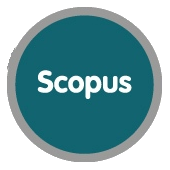Análisis psicométrico de una escala de percepción sobre la utilidad de Moodle en la universidad
Resumen
Palabras clave
Referencias
Ajzen, I., & Fishbein, M. (1980). Understanding attitudes and predicting social behavior. Englewood Cliffs, New York: Prentice-Hall.
Al-Busaidi, K. A., & Al-Shihi, H. (2012). Key factors to instructors’ satisfaction of learning management systems in blended learning. Journal of Computing in Higher Education, 24 (1), 18-39.
Antonenko, P., Toy, S., & Niederhauser, D. (2004). Modular Object-Oriented Dynamic Learning Environment: What Open Source Has to Offer. En Association for Educational Communications and Technology. Recuperado de http://www.eric.ed.gov/ERICWebPortal/detail?accno=ED485088
Arnal, J., Rincón, D. del, & Latorre, A. (1992). Investigación educativa: fundamentos y metodologías (1a. ed.). Barcelona: Labor.
Aydin, C. C., & Tirkes, G. (2010). Open Source Learning Management Systems in Distance Learning. Turkish Online Journal of Educational Technology, 9 (2), 175-184.
Bandura, A., & Locke, E. A. (2003). Negative self-efficacy and goal effects revisited. The Journal of Applied Psychology, 88(1), 87-99.
Barberá, E. & Badia, A. (2004). Educar con aulas virtuales. Orientaciones para la innovación en el proceso de enseñanza y aprendizaje. Madrid: Antonio Machado Libros.
Bollen, K. A. (1989). Structural equations with latent variables. New York: Wiley-Interscience.
Brennan, R. L., & Prediger, D. J. (1981). Coefficient Kappa: Some uses, misuses, and alternatives. Educational and Psychological Measurement (41), 687-699.
Britain, S. & Liber, O. (1999). A Framework for Pedagogical Evaluation of Virtual Learning Environments. Recuperado de http://www.jtap.ac.uk/reports/htm/jtap-041.html
Byrne, B. (2001). Structural equation modeling with amos: basic concepts, applications, and programming. Oxford: Routledge.
Castells, M. (1999). La Era de la información: economía, sociedad y cultura. La sociedad Red (Vol. 1). Madrid: Alianza Editorial.
Cohen, D., & McCuaig, W. (2008). Three lectures on post-industrial society. Cambridge: MIT Press.
Cohen, J. (1960). A coefficient of agreement for nominal scales. Educational and Psychological Measurement, (20), 37-46.
Cole, J. & Foster, H. (2007). Using Moodle: Teaching with the Popular Open Source Course Management System. London: O'Reilly.
Conrey, F. R. & Smith, E. R. (2000). Attitude Representation: Attitudes as Patterns in a Distributed, Connectionist Representational System, Social Cognition, 25 (5), 718-735.
Davis, F. D. (1993). User acceptance of information technology: system characteristics, user perceptions and behavioral impacts. International Journal of Man-Machine Studies, 38 (3), 475-487.
Davis, F. D., Bagozzi, R. P., y Warshaw, P. R. (1989). User Acceptance of Computer Technology: A Comparison of Two Theoretical Models. Management Science, 35 (8), 982-1003.
De Barros, A. F. (2012). Características Psicométricas da Adaptacão Portuguesa do Perfil de Auto-Percepção para Estudiantes Universitários - SPPCS. Revista Iberoamericana de Diagnóstico y Evaluación Psicológica, 1(33), 93-110.
DeNeui, D. L., & Dodge, T. L. (2006). Asynchronous Learning Networks and Student Outcomes: The Utility of Online Learning Components in Hybrid Courses. Journal of Instructional Psychology, 33 (4), 256-259.
Eastman, C., & Marzillier, J. S. (1984). Theoretical and methodological difficulties in Bandura’s self-efficacy theory. Cognitive Therapy and Research, 8 (3), 213-229.
Ellis, R.K. (2009). Learning Managament Systems. Alexandria: American Society for Training & Development (ASTD).
Ellison, N.B., Steinfield, C., & Lampe, C. (2007). The benefits of facebok “friends”: Social capital and college students’ use of online social network sites. Journal of Computer-Mediated Communication, 12(4), 1143-1168.
Elosua Oliden, P. & Zumbo, B.D. (2008). Coeficientes de fiabilidad para escalas de respuesta categórica ordenada. Psicothema, 20(4), 896-901.
Escobar-Rodriguez, T., & Monge-Lozano, P. (2012). The acceptance of Moodle technology by business administration students. Computers & Education, 58 (4), 1085–1093.
Friedrich, H. F., & Hron, A. (2010). Factors Influencing Pupils’ Acceptance of an E-Learning System for Secondary Schools. Journal of Educational Computing Research, 42(1), 63-78.
García Jiménez, E., Gil Flores, J., & Rodríguez Gómez, G. (2000). Análisis factorial. Madrid: La Muralla.
Gómez Rey, I.; Hernández García, E., & Rico García, M. (2009). Moodle en la enseñanza presencial y mixta del inglés en contextos universitarios. RIED. Revista Iberoamericana de Educación a Distancia, 12 (1), 169-194.
Goyal, E., & Purohit, S. (2010). Study of Using Learning Management System in a Management Course. SIES Journal of Management, 6(2), 11-20.
Hofacker, C.F. (1984). Categorical judgment scaling with ordinal assumptions. Multivariate Behavioral Research, 19, 91-106.
Kirner, T.G., & Saraiva, A.V. (2007). Software Usability Evaluation: an Empirical Study. Paper presented at Proceedings of the 9th International Conference on Enterprise Information Systems. Funchal, Portugal, 459-465.
Kline, R. (2005). Principles and practice of structural equation modeling. New York: Guilford Press.
Klobas, J. E., & McGill, T. J. (2010). The role of involvement in learning management system success. Journal of Computing in Higher Education, 22(2), 114-134.
Labovitz, S (1970). The assignment of numbers to Rank order categories. American Sociological Review, 35, 315-324.
Labovitz, S. (1967). Some observations on measurement and statistics. Social Forces, 46, 151-160.
Landis J.R. & Koch, G. (1977). The measurement of observer agreement for categorical data. Biometrics (33), 159-174.
Lévy Mangin, J.-P. (2006). Modelización con estructuras de covarianzas en ciencias sociales: temas esenciales, avanzados y aportaciones especiales. España: Netbiblo.
Lin, Q. (2008). Student satisfactions in four mixed courses in elementary teacher education program. Internet and Higher Education, 11(1), 53-59.
López-González, E. (2012). Sugerencias para el análisis de Escalas con Métrica Delicada. Revista Iberoamericana de Evaluación Educativa, 5(1e), 84-105.
López-González, E., Pérez-Carbonell, A. & Ramos, G. (2011). Modelos complementarios al análisis factorial en la construcción de escalas ordinales: un ejemplo aplicado a la medida del Clima Social Aula. Revista de Educación, 354, 369-397.
Mardia, K. V. (1970). Measures of multivariate skewness and kurtosis with applications. Biometrika, 57(3), 519-530.
Martín-Blas, T., & Serrano-Fernández, A. (2009). The role of new technologies in the learning process: Moodle as a teaching tool in Physics. Computers & Education, 52, 35–44.
Martorell, C., González, R., Ordóñez, A. N. A., & Gómez, O. (2011). Estudio confirmatiorio del cuestionario de conducta antisocial (CCA) y su relación con variables de personalidad y conducta antisocial. Revista Iberoamericana de Diagnóstico y Evaluación Psicológica, 1(31), 97-113.
Medina, F., & Galván, M. (2007). Imputácion de datos: teoría y práctica. Santiago de Chile: Naciones Unidas, CEPAL, División de Estadística y Proyecciones Económicas.
Melton, J. (2006). The LMS Moodle: A Usability Evaluation. Japan: Prefectural University of Kumamoto.
Moore, K., & Iida, S. (2010). Students’ perception of supplementary, online activities for Japanese language learning: Groupwork, quiz and discussion tools. Australasian Journal of Educational Technology, 26(7), 966-979.
Morales Vallejo, P. (2006). Medición de actitudes en psicología y educación. Construcción de escalas y problemas metodológicos. Madrid: Universidad Pontificia de Comillas.
Morales, P., Urosa, B., & Blanco, A. (2003). Construcción de escalas de actitudes tipo Likert. Madrid: La Muralla.
Naveh, G., Tubin, D., & Pliskin, N. (2010). Student LMS use and satisfaction in academic institutions: The organizational perspective. Internet and Higher Education, 13(3), 127-133.
Nunnally, J.C. (1978). Psychometric theory. New York: McGraw-Hill.
Núñez, J.C, Cerezo, R., Bernardo, A., Rosário, P., Valle, A., Fernández, E., & Suárez, N. (2011). Implementation of training programs in self-regulated learning strategies in Moodle format: Results of an experience in higher education. Psicothema 23(2), 274-281
Ozkan, S., & Koseler, R. (2009). Multi-dimensional students’ evaluation of e-learning systems in the higher education context: An empirical investigation. Computers & Education, 53(4), 1285-1296.
Palmer, S., y Holt, D. (2010). Students’ perceptions of the value of the elements of an online learning environment: looking back in moving forward. Interactive Learning Environments, 18(2), 135-151.
Peat, M., y Franklin, S. (2002). Supporting Student Learning: The Use of Computer-based 9. Formative Assesment Modules. British Journal of Educational Technology, 33(5), 515-523.
Pérez i Garcias, A. (2006). Internet aplicado a la educación: aspectos técnicos y comunicativos. En J. Cabero (coord.) (2006). Nuevas tecnologías aplicadas a la educación. Madrid: Mc Graw Hill.
Richardson, J., & Swan, K. (2003). Examining social presence in online courses in relation to students' perceived learning and satisfaction. Journal of Asynchronous Learning 6 (1), 21-40.
Ross, I. (2008). Moodle, la plataforma para la enseñanza y organización escolar. Ikastorratza, e- Revista de Didáctica 2. Recuperado de http://www.ehu.es/ikastorratza/2_alea/moodle.pdf
Rottinghaus, P. J., Larson, L. M., & Borgen, F. H. (2003). The relation of self-efficacy and interests: a meta-analysis of 60 samples. Journal of Vocational Behavior, 62(2), 221-236.
Rubin, B., Fernandes, R., y Avgerinou, M. D. (2013). The effects of technology on the Community of Inquiry and satisfaction with online courses. Internet and Higher Education, 17, 48-57.
Rus, T. I., Pina, F. H., Sánchez Y, J. J. M., & Martínez, O. L. (2011). Adaptación y validación de la escala de actitudes hacia el trabajo en desempleados mayores de 45 años. Revista Iberoamericana de Diagnóstico y Evaluación Psicológica, 2(32), 105-122.
Saito, D. S., & Ulbricht, V. R. (2012). Learning Managent Systems and Face-to-Face Teaching in Bilingual Modality (Libras/Portuguese). IEEE Latin America Transactions, 10(5), 2168-2174.
Silva Quiroz, J. (2011). Diseño y moderación de entornos virtuales de aprendizaje (EVA). Barcelona: UOC.
Sørebø, Ø., Halvari, H., Gulli, V. F., & Kristiansen, R. (2009). The role of self-determination theory in explaining teachers’ motivation to continue to use e-learning technology. Computers & Education, 53 (4), 1177-1187.
Soyibo, K., & Hudson, A. (2000). Effects of Computer-assisted Instruction (CAI) on 11th 8. Graders’ Attitudes to Biology and CAI and Understanding of Reproduction in Plants and Animals. Research in Science Technological Education, 18 (2), 191-199.
Steyaert, J. (2005). Web based higher education, the inclusion/exclusion paradox. Journal of Technology in Human Services, 23 (1/2), 67-68.
Swan, K., Shea, P., Fredericksen, E., Pickett, A., Pelz, W., & Maher, G. (2000). Building Knowledge Building Communities: Consistency, Contact and Communication in the Virtual Classroom. Journal of Educational Computing Research, 23(4), 359-83.
Valentine, J. C., Dubois, D. L., & Cooper, H. (2004). The relation between self-beliefs and academic achievement: a meta-analytic review. Educational Psychologist, 39(2), 111-133.
Vaughan, N. (2007). Perspectives on Blended Learning in Higher Education. International Journal on E-Learning, 6 (1), 81-94.
Vigostsky, L. (1995). Pensamiento y lenguaje. Buenos Aires: Paidós.
Weaver, D., Spratt, C., & Nair, C. S. (2008). Academic and student use of a learning management system: Implications for quality. Australasian Journal of Educational Technology, 24 (1), 30-41.
Weller, M. (2007). Virtual Learning Environments: using, choosing and developing your VLE. New York: Routledge.
Williams van Rooij, S. (2012). Open-source learning management systems: a predictive model for higher education. Journal of Computer Assisted Learning, 28 (2), 114–125.
Yueh, H., & Hsu. S. (2008). Designing a learning management system to support instruction. Communications of the ACM, 51 (4), 59- 63.
Enlaces refback
- No hay ningún enlace refback.


